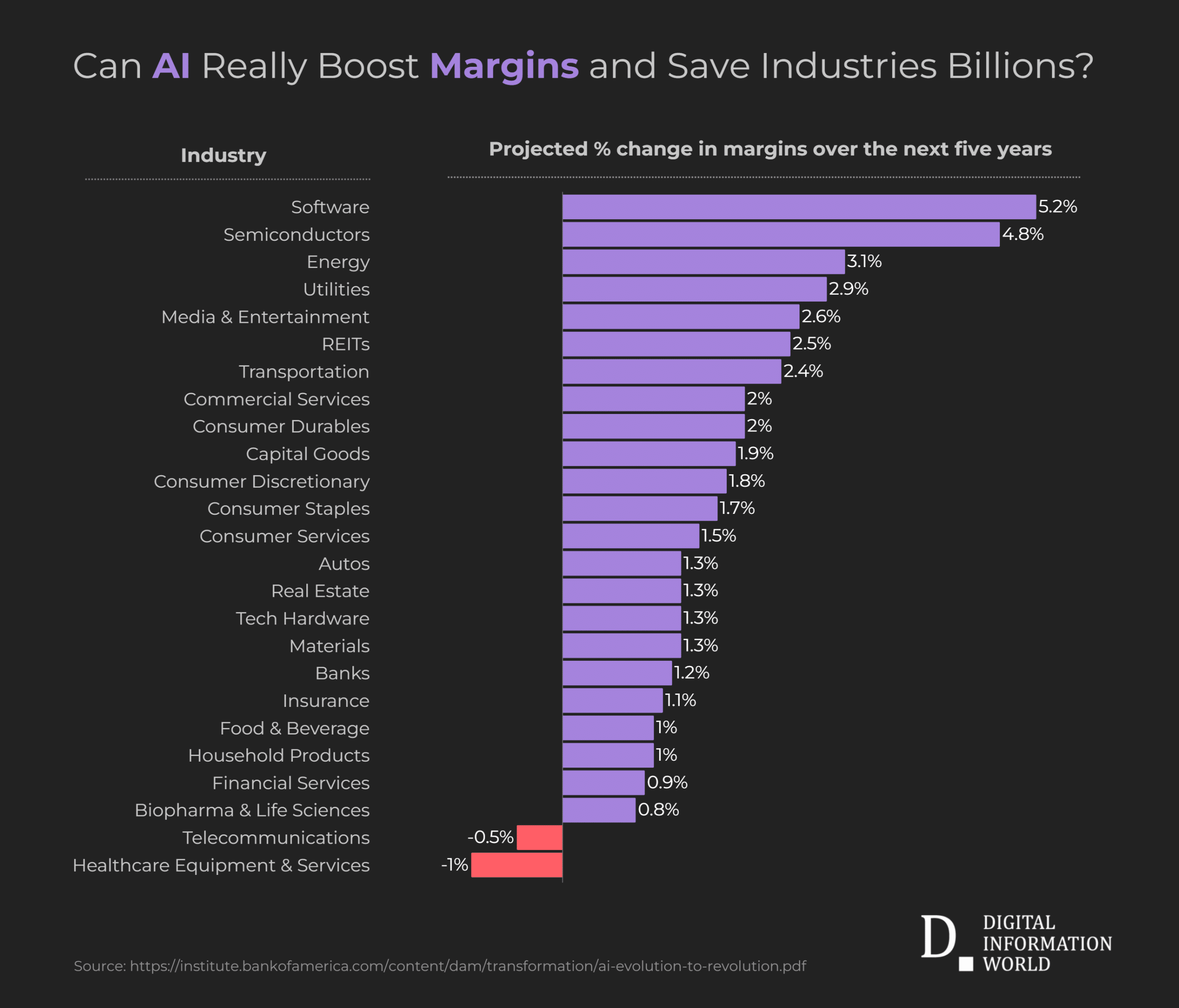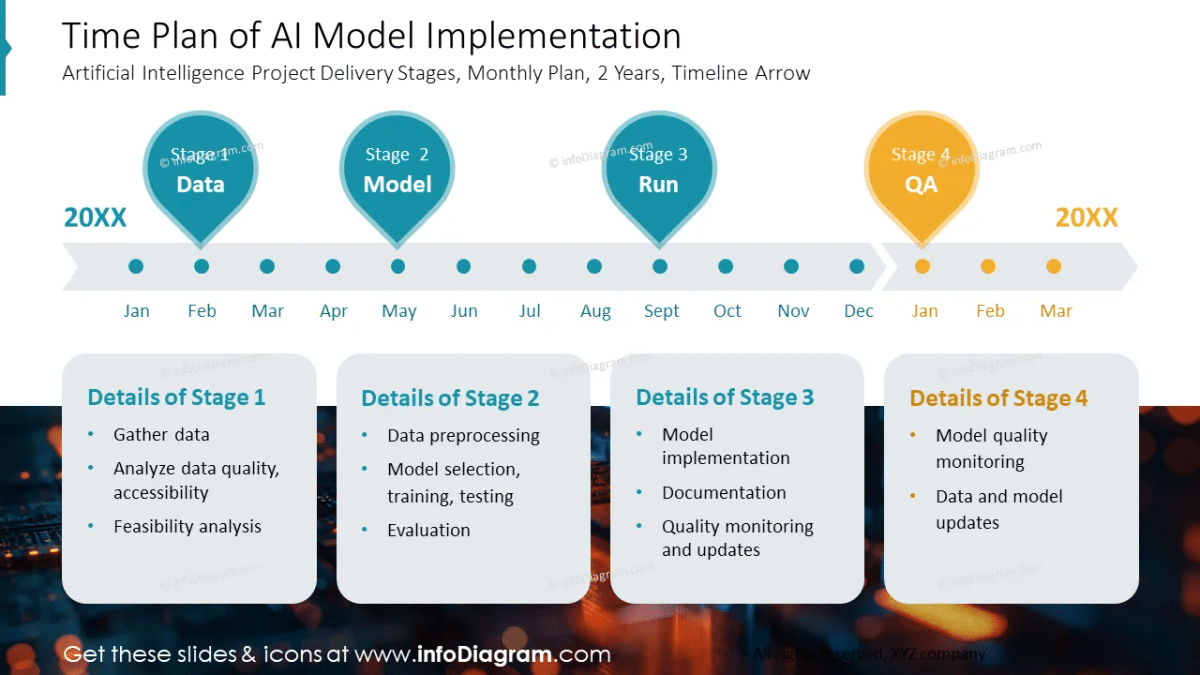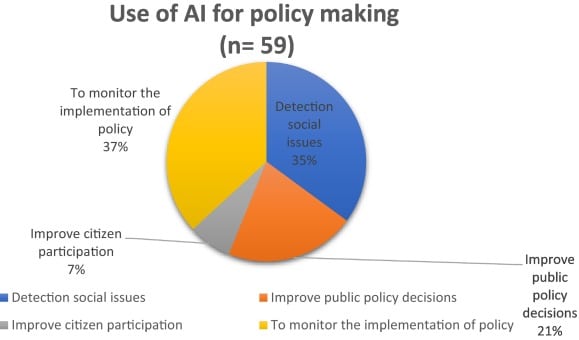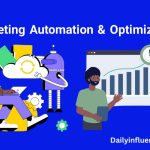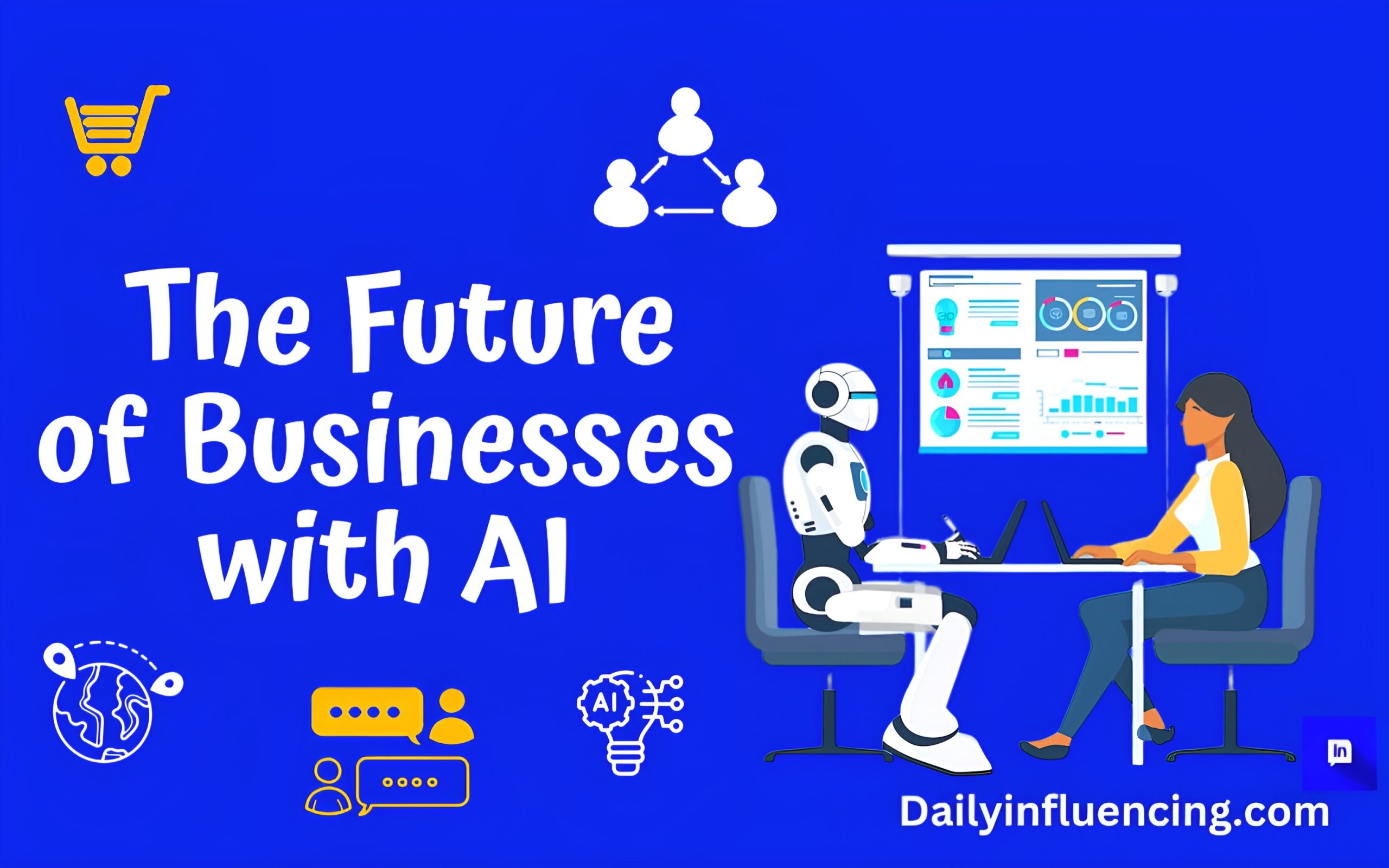
In 2025, AI in Business isn’t just a tool anymore—it’s the backbone of innovation, modernizing how businesses operate, compete, and grow. From automating complex tasks to delivering hyper-personalized customer experiences, companies are leveraging AI to boost efficiency and unlock new revenue streams.
Whether it’s AI-driven decision-making, smart automation, or predictive analytics, the technology is reshaping and advancing industries at an unprecedented pace.
The change is happening right before our eyes, and it’s not just tech giants leading the charge. From corner shops to multinational corporations, AI in business is reshaping how we work, decide, and grow. The numbers tell a compelling story: 78% of businesses implementing AI have seen significant productivity gains within their first year of adoption.
The Foundation of AI in Business Success
1. Current AI Technology Landscape
The world of AI has evolved dramatically over the years. In the past, implementing basic automation felt like rocket science. Today, we’re seeing AI systems that can predict market trends, automate complex decisions, and even handle customer service with remarkably human-like interaction.
Recent data from Gartner shows that 73% of organizations are either piloting or actively using AI applications in their operations. The technology has matured beyond simple task automation – we’re now looking at sophisticated systems that can analyze millions of data points in seconds and make nuanced business decisions.
2. Key AI Applications in Modern Enterprises
Recall those days when “AI in business” meant a chatbot that could barely understand basic queries – that’s right! Those days are long gone! Modern enterprises are deploying AI in ways that would’ve seemed like science fiction just a few years ago.
Here’s what’s really working in the field:
- Predictive analytics for inventory management
- Customer behavior modeling
- Automated quality control systems
- AI-powered decision support tools
The key to success isn’t just implementing these tools – it’s understanding how they fit into your existing business ecosystem. As one CEO told me,
“AI isn’t magic; it’s more like having a highly efficient assistant who never sleeps.”
3. Integration Challenges and Solutions
implementing AI isn’t all sunshine and algorithms. I’ve seen companies stumble because they treated AI like a magic wand instead of a business tool. The truth is, successful AI integration requires careful planning, clear objectives, and most importantly, a realistic understanding of what AI can and cannot do.
Common challenges include:
- Data quality and accessibility issues
- Employee resistance to change
- Integration with legacy systems
- Cost management and ROI tracking
The solution is to start small, focus on specific problems, and scale gradually. A retail client began with a simple inventory management AI before expanding to more complex applications. This approach allowed them to build confidence and expertise while managing risks effectively.
AI’s Impact on Business Profits
Couple of years ago, an e-commerce company was bleeding money trying to compete in a saturated market. After implementing AI-driven pricing optimization and customer targeting, their profit margins jumped from 12% to 28% in just four months. It’s the kind of transformation that made me realize – AI isn’t just about automation; it’s a profit powerhouse when used strategically.
1. Revenue Generation Through AI in Business Insights
The game-changer in modern business isn’t just having data – it’s knowing what to do with it. AI systems are now capable of analyzing customer behavior patterns and market trends with incredible precision. According to Deloitte’s 2024 AI Business Impact Report, companies using AI for revenue optimization see an average increase of 23% in sales within the first year. It’s like having a thousand market researchers working 24/7, but better.
2. Cost Reduction Strategies
The side of profits in business is quite enticing to begin with, but here’s where it gets interesting. Modern AI systems don’t just slash costs blindly; they perform surgical optimizations that preserve quality while eliminating waste.
The best part is: AI systems are capable of cutting cost by 30% in optimizing production cost just with the right strategy. That’s the kind of ROI that makes CFOs do happy dances in their offices!
3. Market Prediction and Trend Analysis
Think back when market prediction felt like throwing darts blindfolded? Those days are history. AI systems now process millions of data points from social media, economic indicators, and consumer behavior to predict market trends with stunning accuracy.
A study by Mitsloan Review found that about 92% of big companies are achieving ROI in artificial intelligence, and the same percentage are increasing their AI investments. That’s not just impressive – it’s game-changing for business planning and strategy.
4. Customer Behavior Forecasting
Things can get really exciting when modern AI systems don’t just tell you what customers did yesterday; they predict what they’ll want tomorrow.
Most businesses are seriously leveraging the use of AI and I can tell you for a fact that you’re missing out if you’re not making use of one at most to scale your business even further.
Real-world success metrics show:
- 27% increase in customer lifetime value
- 34% reduction in customer churn
- 42% improvement in upsell success rates
Implementation Strategies for AI in Business
Having seen most businesses transform their company growth through the use of AI, I’ve learned one vital lesson: successful AI implementation isn’t about having the fanciest tools – it’s about having the right strategy. Last year, a mid-sized logistics company wasted $200,000 on an AI system they weren’t ready for, while another succeeded brilliantly with a quarter of that budget.
1. Assessment of Business Needs
The first step in any successful AI implementation isn’t technical – it’s strategic. According to IBM’s 2024 AI Adoption Study, 67% of failed AI initiatives stumbled because they didn’t align with actual business needs. Think of it like building a house: you wouldn’t start with the roof, would you?
Start with these fundamental questions:
- What specific problems are you trying to solve?
- Where are your biggest operational bottlenecks?
- Which processes consume most of your resources?
2. Technology Selection Process
The key isn’t finding the most advanced technology; it’s finding the right fit for your specific needs. Unfortunately most businesses have failed woefully in finding the best AI tool for their business.
One of the best ways to start getting things right is to build a strong system that helps in guiding your path.
- Compatibility with existing systems (30%)
- Scalability potential (25%)
- Implementation complexity (25%)
- Cost vs. expected ROI (20%)
This approach can help your business avoid the “shiny object syndrome” and focus on solutions that actually deliver value.
3. AI in Business Integration Best Practices
Integration is where the rubber meets the road. A restaurant owner once told me, “Getting the AI was easy – making it work with our 20-year-old systems was the real challenge.”
Here’s what successful integration looks like:
1. Start with a pilot program in a controlled environment
2. Document everything – especially unexpected issues
3. Create clear communication channels between IT and operations
4. Build feedback loops for continuous improvement
4. Employee Training and Adoption
The human element of AI implementation often makes or breaks the project. Remember, you’re not just installing software; you’re changing how people work. According to McKinsey, companies that invest heavily in AI training see 32% higher adoption rates and 47% faster ROI.
A successful training strategy includes:
- Role-specific training modules
- Hands-on practice sessions
- Regular feedback mechanisms
- Clear documentation and support systems
5. Budget Considerations and ROI Tracking
At the end of the day, what matters the most to stakeholders is the money. When planning your AI budget, follow the 40-40-20 rule:
- 40% for technology and implementation
- 40% for training and change management
- 20% for unexpected issues and optimization
6. Risk Mitigation Approaches for AI in Business
Every AI implementation comes with risks, but they can be managed. A structured risk management approach should include:
1. Data security protocols
2. System redundancy plans
3. Regular backup procedures
4. Compliance monitoring
5. Performance tracking metrics
Remember, the goal isn’t to avoid all risks – it’s to manage them effectively while moving forward. As one successful CTO put it, “We didn’t aim for perfection; we aimed for progress.”
Conclusion
The key to successful AI implementation isn’t just following these steps mechanically – it’s understanding how they fit together in your specific business context. Think of it like conducting an orchestra: each section needs to play its part, but the magic happens when they all work in harmony.
When done right, the use of AI can transform your business operations. But remember, it’s a journey, not a destination. Start small, learn continuously, and scale intelligently. The most successful implementations I’ve seen weren’t the ones with the biggest budgets – they were the ones with the clearest vision and the most committed teams.
FAQs
The cost varies significantly, ranging from $10,000 for basic solutions to $500,000+ for enterprise-wide implementations. Cloud-based AI solutions often start at $1,000-$5,000 monthly.
Most businesses see initial ROI within 6-18 months, with some reporting faster returns in specific applications like customer service automation or inventory management.
While not all small businesses need complex AI systems, many can benefit from basic AI tools for tasks like customer service, scheduling, and inventory management that scale with their growth.
Data quality and integration with existing systems typically present the biggest challenges, followed by employee training and adoption.
Start by auditing your current processes, identifying clear objectives, ensuring data quality, and investing in employee training before implementing AI solutions.


